Thermal Management System Architecture for Hydrogen-Powered Propulsion Technologies: Practices, Thematic Clusters, System Architectures, Future Challenges, and Opportunities
Abstract
1. Introduction
- ⮚
- Section 2 addresses a systematic scientometrics analysis in the field and identifies the key milestones and fundamental articles through a methodological data collection approach. Further, a critical literature review is conducted to identify the thematic clusters and remaining research questions as well as to clarify the technology trend in the field.
- ⮚
- In Section 3, the concept of thermal management and its role in hydrogen-powered propulsion system performance is presented, and different components are analysed separately. With regards to the identified research and practical challenges, three fuel system architectures for the utilisation of hydrogen are proposed to cope with the thermal loads generated by heat sources in thermal management system architecture. The pros and cons of each architecture are also discussed in detail. Further, the said three architectures are extended to be adopted to the applications of the fuel cells in aviation for illustration and discussions.
- ⮚
- Section 4 opens the discussion on research challenges and key issues that are to be addressed from the thermal management and fuel system design viewpoints to enable a hydrogen-powered propulsion system to be adopted by air vehicles’ engine designers and manufacturers. The proposed architectures are argued from different points of view, including weight, cost, complexity, and impact by system-level examination of the critical areas in the field.
- ⮚
- Conclusion remarks are summarised in Section 5.
2. Scientometrics and Literature Review
- ⮚
- ⮚
2.1. Methodology and Data Collection
- Phase 1—1991 to 2004 (timespan inclusive of both years).
- Phase 2—2005 to 2016 (timespan inclusive of both years).
- Phase 3—2017 to 2021 (timespan inclusive of both years).
2.2. Identification of Fundamental Articles
2.3. Identification of Technology Trend
2.3.1. Phase 1 (Timespan—1991 to 2004)
2.3.2. Phase 2 (Timespan—2005 to 2016)
2.3.3. Phase 3 (Timespan 2017 to 2021)
3. Thermal Management
- The higher component temperatures.
- The higher temperature of the working fluids.
- Higher heat generated within the Engine and its sub-systems owing to points 1 and 2.
- Maximise the utilisation of heat generated and avoid unnecessary heat losses.
- Enable various components and systems to operate at an acceptable limit to ensure higher component life and performance and thereby reduce the intervention for maintenance and services and so forth.
- Fuel System—Designed to act as a heat sink for the Oil System that scavenges heat from various components/systems in the engine.
- Oil System—Designed to scavenge the excess heat while providing essential cooling and corrosion protection to specific components/systems in the engine.
- (Internal or Secondary) Air System—Aids in cooling the engine components, anti-icing, and cabin environment control.
3.1. Engine Fuel System Architecture for Utilisation of Hydrogen
3.1.1. Tanks and Fuel Drain Tank
3.1.2. Heat Exchangers (HEX)
- The first path solves the thermal problem, in which some geometrical parameters can be used as input to obtain the desired thermal outlet conditions.
- The second path solves the sizing problem, in which imposing some thermal conditions allows the tool to offer suitable geometrical ranges for those conditions (more precisely, the U-A parameter, where U stands for overall heat exchange coefficient and A is the heat exchange surface).
3.1.3. Pumps or Mechanical Compressors
3.1.4. Insulation
3.1.5. Supply Pipes
3.2. Fuel Cells
4. Discussions
5. Conclusions
Author Contributions
Funding
Institutional Review Board Statement
Informed Consent Statement
Data Availability Statement
Conflicts of Interest
References
- Fuss, S.; Canadell, J.G.; Ciais, P.; Jackson, R.B.; Jones, C.D.; Lyngfelt, A.; Peters, G.P.; Van Vuuren, D.P. Moving toward Net-Zero Emissions Requires New Alliances for Carbon Dioxide Removal. One Earth 2020, 3, 145–149. [Google Scholar] [CrossRef]
- ACARE Flightpath 2050 Europe’s Vision for Aviation: Report of the High Level Group on Aviation Research; European Union: Brussels, Belgium, 2011; ISBN 978-92-79-19724-6. Available online: https://www.acare4europe.org/documents/latest-acare-documents/acare-flightpath-2050 (accessed on 5 November 2021).
- Soroudi, A.; Jafari, S. Power to air transportation via hydrogen. IET Renew. Power Gener. 2020, 14, 3384–3392. [Google Scholar] [CrossRef]
- Liu, Y.; Sun, X.; Sethi, V.; Nalianda, D.; Li, Y.-G.; Wang, L. Review of modern low emissions combustion technologies for aero gas turbine engines. Prog. Aerosp. Sci. 2017, 94, 12–45. [Google Scholar] [CrossRef]
- Khandelwal, B.; Karakurt, A.; Sekaran, P.R.; Sethi, V.; Singh, R. Hydrogen powered aircraft: The future of air transport. Prog. Aerosp. Sci. 2013, 60, 45–59. [Google Scholar] [CrossRef]
- van Heerden, A.S.J.; Judt, D.M.; Jafari, S.; Lawson, C.P.; Nikolaidis, T.; Bosak, D. Aircraft thermal management: Practices, technology, system architectures, future challenges, and opportunities. Prog. Aerosp. Sci. 2022, 128, 100767. [Google Scholar] [CrossRef]
- Haglind, F.; Singh, R. Design of Aero Gas Turbines Using Hydrogen. J. Eng. Gas Turbines Power 2004, 128, 754–764. [Google Scholar] [CrossRef]
- Cobo, M.J.; Lopez-Herrera, A.G.; Herrera-Viedma, E.; Herrera, F. An approach for detecting, quantifying, and visualizing the evolution of a research field: A practical application to the Fuzzy Sets Theory field. J. Informetr. 2011, 5, 146–166. [Google Scholar] [CrossRef]
- Whittaker, J. Creativity and Conformity in Science: Titles, Keywords and Co-word Analysis. Soc. Stud. Sci. 1989, 19, 473–496. [Google Scholar] [CrossRef]
- Mohammadi, S.J.; Fashandi, S.A.M.; Jafari, S.; Nikolaidis, T. A scientometric analysis and critical review of gas turbine aero-engines control: From Whittle engine to more-electric propulsion. Meas. Control 2021, 54, 935–966. [Google Scholar] [CrossRef]
- Available online: https://access.clarivate.com/ (accessed on 24 September 2021).
- Garfield, E. From the science of science to Scientometrics visualizing the history of science with HistCite software. J. Informetr. 2009, 3, 173–179. [Google Scholar] [CrossRef]
- Burnham, J.F. Scopus database: A review. Biomed. Digit. Libr. 2006, 3, 1. [Google Scholar] [CrossRef]
- Van Eck, N.J.; Waltman, L. VOSviewer Manual; Univeristeit Leiden: Leiden, The Netherlands, 2013; pp. 1–53. [Google Scholar]
- Longwell, J.; Rubin, E.; Wilson, J. Coal: Energy for the future. Prog. Energy Combust. Sci. 1995, 21, 269–360. [Google Scholar] [CrossRef]
- Waitz, I.A.; Gauba, G.; Tzeng, Y.-S. Combustors for Micro-Gas Turbine Engines. J. Fluids Eng. 1998, 120, 109–117. [Google Scholar] [CrossRef]
- Selimovic, A.; Pálsson, J. Networked solid oxide fuel cell stacks combined with a gas turbine cycle. J. Power Sources 2002, 106, 76–82. [Google Scholar] [CrossRef]
- Winkler, W.; Lorenz, H. The design of stationary and mobile solid oxide fuel cell–gas turbine systems. J. Power Sources 2002, 105, 222–227. [Google Scholar] [CrossRef]
- Burer, M.; Tanaka, K.; Favrat, D.; Yamada, K. Multi-criteria optimization of a district cogeneration plant integrating a solid oxide fuel cell–gas turbine combined cycle, heat pumps and chillers. Energy 2003, 28, 497–518. [Google Scholar] [CrossRef]
- Spadaccini, C.M.; Mehra, A.; Lee, J.; Zhang, X.; Lukachko, S.; Waitz, I.A. High Power Density Silicon Combustion Systems for Micro Gas Turbine Engines. J. Eng. Gas Turbines Power 2003, 125, 709–719. [Google Scholar] [CrossRef]
- Chiesa, P.; Lozza, G.; Mazzocchi, L. Using Hydrogen as Gas Turbine Fuel. J. Eng. Gas Turbines Power 2005, 127, 73–80. [Google Scholar] [CrossRef]
- Ertesvåg, I.S.; Kvamsdal, H.M.; Bolland, O. Exergy analysis of a gas-turbine combined-cycle power plant with precombustion CO2 capture. Energy 2005, 30, 5–39. [Google Scholar] [CrossRef]
- Calise, F.; D’Accadia, M.D.; Palombo, A.; Vanoli, L. Simulation and exergy analysis of a hybrid Solid Oxide Fuel Cell (SOFC)–Gas Turbine System. Energy 2006, 31, 3278–3299. [Google Scholar] [CrossRef]
- Kvamsdal, H.M.; Jordal, K.; Bolland, O. A quantitative comparison of gas turbine cycles with CO2 capture. Energy 2007, 32, 10–24. [Google Scholar] [CrossRef]
- Calise, F.; d’Accadia, M.D.; Vanoli, L.; von Spakovsky, M.R. Full load synthesis/design optimization of a hybrid SOFC–GT power plant. Energy 2007, 32, 446–458. [Google Scholar] [CrossRef]
- Mueller, F.; Jabbari, F.; Brouwer, J.; Roberts, R.; Junker, T.; Ghezel-Ayagh, H. Control Design for a Bottoming Solid Oxide Fuel Cell Gas Turbine Hybrid System. J. Fuel Cell Sci. Technol. 2006, 4, 221–230. [Google Scholar] [CrossRef][Green Version]
- Autissier, N.; Palazzi, F.; Maréchal, F.; Van Herle, J.; Favrat, D. Thermo-Economic Optimization of a Solid Oxide Fuel Cell, Gas Turbine Hybrid System. J. Fuel Cell Sci. Technol. 2007, 4, 123–129. [Google Scholar] [CrossRef][Green Version]
- Mueller, F.; Gaynor, R.; Auld, A.E.; Brouwer, J.; Jabbari, F.; Samuelsen, G.S. Synergistic integration of a gas turbine and solid oxide fuel cell for improved transient capability. J. Power Sources 2008, 176, 229–239. [Google Scholar] [CrossRef][Green Version]
- Bao, C.; Shi, Y.; Li, C.; Cai, N.; Su, Q. Multi-level simulation platform of SOFC–GT hybrid generation system. Int. J. Hydrogen Energy 2010, 35, 2894–2899. [Google Scholar] [CrossRef]
- Tse, L.K.C.; Wilkins, S.; McGlashan, N.; Urban, B.; Martinez-Botas, R. Solid oxide fuel cell/gas turbine trigeneration system for marine applications. J. Power Sources 2011, 196, 3149–3162. [Google Scholar] [CrossRef]
- Park, S.K.; Ahn, J.-H.; Kim, T.S. Performance evaluation of integrated gasification solid oxide fuel cell/gas turbine systems including carbon dioxide capture. Appl. Energy 2011, 88, 2976–2987. [Google Scholar] [CrossRef]
- Zhao, Y.; Sadhukhan, J.; Lanzini, A.; Brandon, N.; Shah, N. Optimal integration strategies for a syngas fuelled SOFC and gas turbine hybrid. J. Power Sources 2011, 196, 9516–9527. [Google Scholar] [CrossRef]
- He, F.; Li, Z.; Liu, P.; Ma, L.; Pistikopoulos, E.N. Operation window and part-load performance study of a syngas fired gas turbine. Appl. Energy 2011, 89, 133–141. [Google Scholar] [CrossRef]
- Yan, Z.; Zhao, P.; Wang, J.; Dai, Y. Thermodynamic analysis of an SOFC–GT–ORC integrated power system with liquefied natural gas as heat sink. Int. J. Hydrogen Energy 2013, 38, 3352–3363. [Google Scholar] [CrossRef]
- Barelli, L.; Bidini, G.; Ottaviano, P.A. Part load operation of a SOFC/GT hybrid system: Dynamic analysis. Appl. Energy 2013, 110, 173–189. [Google Scholar] [CrossRef]
- Liu, M.; Shi, Y.; Fang, F. Combined cooling, heating and power systems: A survey. Renew. Sustain. Energy Rev. 2014, 35, 1–22. [Google Scholar] [CrossRef]
- Siddiqui, O.; Dincer, I. Analysis and performance assessment of a new solar-based multigeneration system integrated with ammonia fuel cell and solid oxide fuel cell-gas turbine combined cycle. J. Power Sources 2017, 370, 138–154. [Google Scholar] [CrossRef]
- Hajabdollahi, Z.; Fu, P.-F. Multi-objective based configuration optimization of SOFC-GT cogeneration plant. Appl. Therm. Eng. 2017, 112, 549–559. [Google Scholar] [CrossRef]
- Azizi, M.A.; Brouwer, J. Progress in solid oxide fuel cell-gas turbine hybrid power systems: System design and analysis, transient operation, controls and optimization. Appl. Energy 2018, 215, 237–289. [Google Scholar] [CrossRef]
- Bao, C.; Wang, Y.; Feng, D.; Jiang, Z.; Zhang, X. Macroscopic modeling of solid oxide fuel cell (SOFC) and model-based control of SOFC and gas turbine hybrid system. Prog. Energy Combust. Sci. 2018, 66, 83–140. [Google Scholar] [CrossRef]
- Abbasi, M.; Chahartaghi, M.; Hashemian, S.M. Energy, exergy, and economic evaluations of a CCHP system by using the internal combustion engines and gas turbine as prime movers. Energy Convers. Manag. 2018, 173, 359–374. [Google Scholar] [CrossRef]
- Lee, Y.D.; Ahn, K.Y.; Morosuk, T.; Tsatsaronis, G. Exergetic and exergoeconomic evaluation of an SOFC-Engine hybrid power generation system. Energy 2018, 145, 810–822. [Google Scholar] [CrossRef]
- Behzadi, A.; Habibollahzade, A.; Zare, V.; Ashjaee, M. Multi-objective optimization of a hybrid biomass-based SOFC/GT/double effect absorption chiller/RO desalination system with CO2 recycle. Energy Convers. Manag. 2019, 181, 302–318. [Google Scholar] [CrossRef]
- Osigwe, E.; Gad-Briggs, A.; Nikolaidis, T.; Jafari, S.; Sethi, B.; Pilidis, P. Thermodynamic Performance and Creep Life Assessment Comparing Hydrogen- and Jet-Fueled Turbofan Aero Engine. Appl. Sci. 2021, 11, 3873. [Google Scholar] [CrossRef]
- Noyons, E.; van Raan, A. Monitoring scientific developments from a dynamic perspective: Self-organized structuring to map neural network research. J. Am. Soc. Inf. Sci. 1998, 49, 68–81. [Google Scholar]
- Callon, M.; Courtial, J.P.; Turner, W.A. Future developments. In Mapping the Dynamics of Science and Technology: Sociology of Science in the Real World; Callon, M., Law, J., Rip, A., Eds.; Macmillan: London, UK, 1986; pp. 211–217. [Google Scholar]
- Garrigos-Simon, F.J.; Narangajavana-Kaosiri, Y.; Lengua-Lengua, I. Tourism and sustainability: A bibliometric and visualization analysis. Sustainability 2018, 10, 1976. [Google Scholar] [CrossRef]
- Wang, C.; Lim, M.K.; Zhao, L.; Tseng, M.-L.; Chien, C.-F.; Lev, B. The evolution of Omega-The International Journal of Management Science over the past 40 years: A bibliometric overview. Omega 2020, 93, 102098. [Google Scholar] [CrossRef]
- Royce, R. The Jet Engine, 5th ed.; John Wiley & Sons: Hoboken, NJ, USA, 2015; ISBN 9781119065999. Available online: https://app.knovel.com/hotlink/toc/id:kpJEE00001/jet-engine-5th-edition/jet-engine-5th-edition (accessed on 17 October 2021).
- Jafari, S.; Nikolaidis, T. Thermal Management Systems for Civil Aircraft Engines: Review, Challenges and Exploring the Future. Appl. Sci. 2018, 8, 2044. [Google Scholar] [CrossRef]
- Available online: https://h2tools.org/hyarc/hydrogen-data/basic-hydrogen-properties (accessed on 20 October 2021).
- Available online: https://h2tools.org/hyarc/hydrogen-data/comparative-properties-hydrogen-and-other-fuels (accessed on 20 October 2021).
- Huete, J.; Pilidis, P. Parametric study on tank integration for hydrogen civil aviation propulsion. Int. J. Hydrogen Energy 2021, 46, 37049–37062. [Google Scholar] [CrossRef]
- Emmanouil, K.I. The Use of Hydrogen as a Multipurpose Fluid on a More Electric Aircraft; Department of Power and Propulsion, School of Engineering, Cranfield University: Bedford, UK, 2013. [Google Scholar]
- Verstraete, D.; Hendrick, P.; Pilidis, P.; Ramsden, K. Hydrogen fuel tanks for subsonic transport aircraft. Int. J. Hydrogen Energy 2010, 35, 11085–11098. [Google Scholar] [CrossRef]
- Brewer, G.D. Hydrogen Aircraft Technology; Routledge: Boca Raton, FL, USA, 2017; ISBN 978-0-203-75148-0. [Google Scholar]
- Brewer, G.D.; Morris, R.E.; Davis, G.W.; Versaw, E.F.; Cunnington, J. Study of Fuel Systems for LH2-Fueled Subsonic Transport Aircraft. Volume 2. Final Report, September 1976–December 1977; NASA, Lockheed-California Co.: Burbank, CA, USA, 1978; p. 354. [Google Scholar]
- Brewer, G.D.; Morris, R.E.; Davis, G.W.; Versaw, E.F.; Cunnington, J. Study of Fuel Systems for LH2-Fueled Subsonic Transport Aircraft. Volume 1. Final Report, September 1976–December 1977; NASA, Lockheed-California Co.: Burbank, CA, USA, 1978. [Google Scholar]
- Mills, G.L.; Buchholtz, B.; Olsen, A. Design, fabrication and testing of a liquid hydrogen fuel tank for a long duration aircraft. AIP Conf. Proc. 2012, 1434, 773. [Google Scholar]
- Corchero, G.; Montañés, J.L. An approach to the use of hydrogen for commercial aircraft engines. Proc. Inst. Mech. Eng. Part G: J. Aerosp. Eng. 2005, 219, 35–44. [Google Scholar] [CrossRef]
- Pena López, Á. Gas Turbine Performance Studies for LH2-Fuelled Engines. Master’s Thesis, Center for Propulsion Engineering, Cranfield University, Bedford, UK, 2021. [Google Scholar]
- Office of Energy Efficiency & Renewable Energy. An Office of U.S Department of Energy, USA. Available online: https://www.energy.gov/eere/fuelcells/hydrogen-storage (accessed on 18 June 2021).
- Periodic Table, Royal Society of Chemistry. Available online: https://www.rsc.org/periodic-table/element/7/nitrogen (accessed on 20 October 2021).
- Periodic Table, Royal Society of Chemistry. Available online: https://www.rsc.org/periodic-table/element/8/oxygen (accessed on 20 October 2021).
- Palmer, J.R.; Pilidis, P. Gas Turbine Performance. Master’s Thesis, Center for Propulsion Engineering, Cranfield University, Bedford, UK, 2020. [Google Scholar]
- Jonsson, I.; Xisto, C.; Abedi, H.; Grönstedt, T.; Lejon, M. Feasibility Study of a Radical Vane-Integrated Heat Exchanger for Turbofan Engine Applications. In Proceedings of the ASME Turbo Expo 2020: Turbomachinery Technical Conference and Exposition, Virtual, 21–25 September 2020; Volume 7C. Heat Transfer, Paper No. V07CT13A019. [Google Scholar]
- Sdanghi, G.; Maranzana, G.; Celzard, A.; Fierro, V. Review of the current technologies and performances of hydrogen compression for stationary and automotive applications. Renew. Sustain. Energy Rev. 2019, 102, 150–170. [Google Scholar] [CrossRef]
- Campbell, W.E.; Farquhar, J. Centrifugal Pumps for Rocket Engines. Available online: https://ntrs.nasa.gov/api/citations/19750003130/downloads/19750003130.pdf (accessed on 26 October 2021).
- Zheng, J.; Chen, L.; Wang, J.; Xi, X.; Zhu, H.; Zhou, Y.; Wang, J. Thermodynamic analysis and comparison of four insulation schemes for liquid hydrogen storage tank. Energy Convers. Manag. 2019, 186, 526–534. [Google Scholar] [CrossRef]
- Jiang, W.; Sun, P.; Li, P.; Zuo, Z.; Huang, Y. Transient thermal behavior of multi-layer insulation coupled with vapor cooled shield used for liquid hydrogen storage tank. Energy 2021, 231, 120859. [Google Scholar] [CrossRef]
- Tamura, M.; Eguchi, T. Nanostructured thin films for hydrogen-permeation barrier. J. Vac. Sci. Technol. A 2015, 33, 041503. [Google Scholar] [CrossRef]
- Henager, C. Hydrogen Permeation Barrier Coatings. In Materials for the Hydrogen Economy; Jones, R., Thomas, G., Eds.; CRC Press: Boca Raton, FL, USA, 2007; pp. 181–190. ISBN 978-0-8493-5024-5. [Google Scholar]
- Darr, S.R.; Hartwig, J.W. Two-Phase Convection Heat Transfer Correlations for Liquid Hydrogen Pipe Chilldown. Cryogenics 2020, 105, 102999. [Google Scholar] [CrossRef]
- Lim, C.L.; Adam, N.M.; Ahmad, K.A. Cryogenic pipe flow simulation for liquid nitrogen with vacuum insulated pipe (VIP) and Polyurethane (PU) foam insulation under steady-state conditions. Therm. Sci. Eng. Prog. 2018, 7, 302–310. [Google Scholar] [CrossRef]
- Deng, B.; Yang, S.; Xie, X.; Wang, Y.; Pan, W.; Li, Q.; Gong, L. Thermal performance assessment of cryogenic transfer line with support and multilayer insulation for cryogenic fluid. Appl. Energy 2019, 250, 895–903. [Google Scholar] [CrossRef]
- Wu, Z.; Zhu, P.; Yao, J.; Tan, P.; Xu, H.; Chen, B.; Yang, F.; Zhang, Z.; Ni, M. Thermo-economic modeling and analysis of an NG-fueled SOFC-WGS-TSA-PEMFC hybrid energy conversion system for stationary electricity power generation. Energy 2020, 192, 116613. [Google Scholar] [CrossRef]
- Nagel, F.P.; Schildhauer, T.J.; Biollaz, S.M.; Wokaun, A. Performance comparison of planar, tubular and Delta8 solid oxide fuel cells using a generalized finite volume model. J. Power Sources 2008, 184, 143–164. [Google Scholar] [CrossRef]
- Aguiar, P.; Adjiman, C.; Brandon, N. Anode-supported intermediate-temperature direct internal reforming solid oxide fuel cell: II. Model-based dynamic performance and control. J. Power Sources 2005, 147, 136–147. [Google Scholar] [CrossRef]
- Xu, M.; Li, T.S.; Yang, M.; Andersson, M.; Fransson, I.; Larsson, T.; Sundén, B. Modeling of an anode supported solid oxide fuel cell focusing on thermal stresses. Int. J. Hydrogen Energy 2016, 41, 14927–14940. [Google Scholar] [CrossRef]
- Nakajo, A.; Stiller, C.; Härkegård, G.; Bolland, O. Modeling of thermal stresses and probability of survival of tubular SOFC. J. Power Sources 2006, 158, 287–294. [Google Scholar] [CrossRef]
- Guk, E.; Venkatesan, V.; Babar, S.; Jackson, L.; Kim, J.-S. Parameters and their impacts on the temperature distribution and thermal gradient of solid oxide fuel cell. Appl. Energy 2019, 241, 164–173. [Google Scholar] [CrossRef]
- Rashidi, S.; Karimi, N.; Sunden, B.; Kim, K.C.; Olabi, A.G.; Mahian, O. Progress and challenges on the thermal management of electrochemical energy conversion and storage technologies: Fuel cells, electrolysers, and supercapacitors. Prog. Energy Combust. Sci. 2021, 88, 100966. [Google Scholar] [CrossRef]
- Aguiar, P.; Adjiman, C.S.; Brandon, N.P. Anode-supported intermediate temperature direct internal reforming solid oxide fuel cell. I: Model-based steady-state performance. J. Power Sources 2004, 138, 120–136. [Google Scholar] [CrossRef]
- Santarelli, M.; Leone, P.; Calì, M.; Orsello, G. Experimental evaluation of the sensitivity to fuel utilization and air management on a 100 kW SOFC system. J. Power Sources 2007, 171, 155–168. [Google Scholar] [CrossRef]
- Choi, S. Protonic ceramic electrochemical cells for hydrogen production and electricity generation: Exceptional reversibility, stability, and demonstrated faradaic efficiency. Energy Environ. Sci. 2019, 12, 206–215. [Google Scholar] [CrossRef]
- Yi, Y.; Rao, A.D.; Brouwer, J.; Samuelsen, G.S. Fuel flexibility study of an integrated 25 kW SOFC reformer system. J. Power Sources 2005, 144, 67–76. [Google Scholar] [CrossRef]
- Choi, E.J.; Park, J.Y.; Kim, M.S. Two-phase cooling using HFE-7100 for polymer electrolyte membrane fuel cell application. Appl. Therm. Eng. 2019, 148, 868–877. [Google Scholar] [CrossRef]
- Sasmito, A.P.; Birgersson, E.; Mujumdar, A.S. Numerical evaluation of various thermal management strategies for polymer electrolyte fuel cell stacks. Int. J. Hydrogen Energy 2011, 36, 12991–13007. [Google Scholar] [CrossRef]
- Guthrie, D.G.; Torabi, M.; Karimi, N. Combined heat and mass transfer analyses in catalytic microreactors partially filled with porous material—The influences of nanofluid and different porous-fluid interface models. Int. J. Therm. Sci. 2019, 140, 96–113. [Google Scholar] [CrossRef]
- Islam, M.; Shabani, B.; Rosengarten, G.; Andrews, J. The potential of using nanofluids in PEM fuel cell cooling systems: A review. Renew. Sustain. Energy Rev. 2015, 48, 523–539. [Google Scholar] [CrossRef]
- Song, T.-W.; Choi, K.-H.; Kim, J.-R.; Yi, J.S. Pumpless thermal management of water-cooled high-temperature proton exchange membrane fuel cells. J. Power Sources 2011, 196, 4671–4679. [Google Scholar] [CrossRef]
- Dillig, M. Thermal Management of Solid Oxide Cell Systems with Integrated Planar Heat Pipes. 2016. Available online: https://opus4.kobv.de/opus4-fau/files/8119/MariusDilligDissertation.pdf (accessed on 10 October 2021).
- Zeng, H.; Wang, Y.; Shi, Y.; Cai, N.; Yuan, D. Highly thermal integrated heat pipe-solid oxide fuel cell. Appl. Energy 2018, 216, 613–619. [Google Scholar] [CrossRef]
- Available online: https://www.enableh2.eu/progress-in-wp3/ (accessed on 25 October 2021).
- Available online: https://research.chalmers.se/en/publication/520249 (accessed on 28 October 2021).
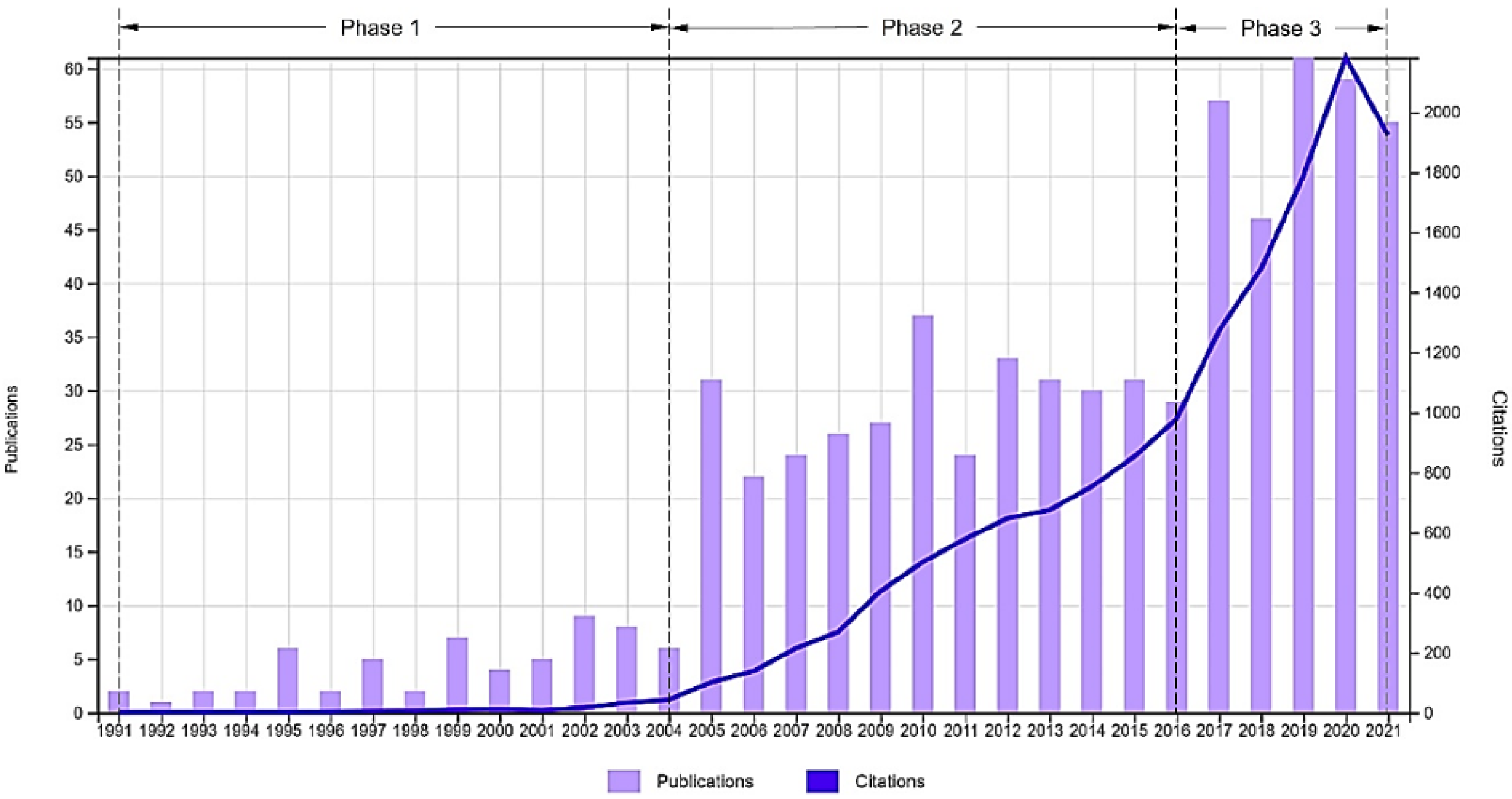

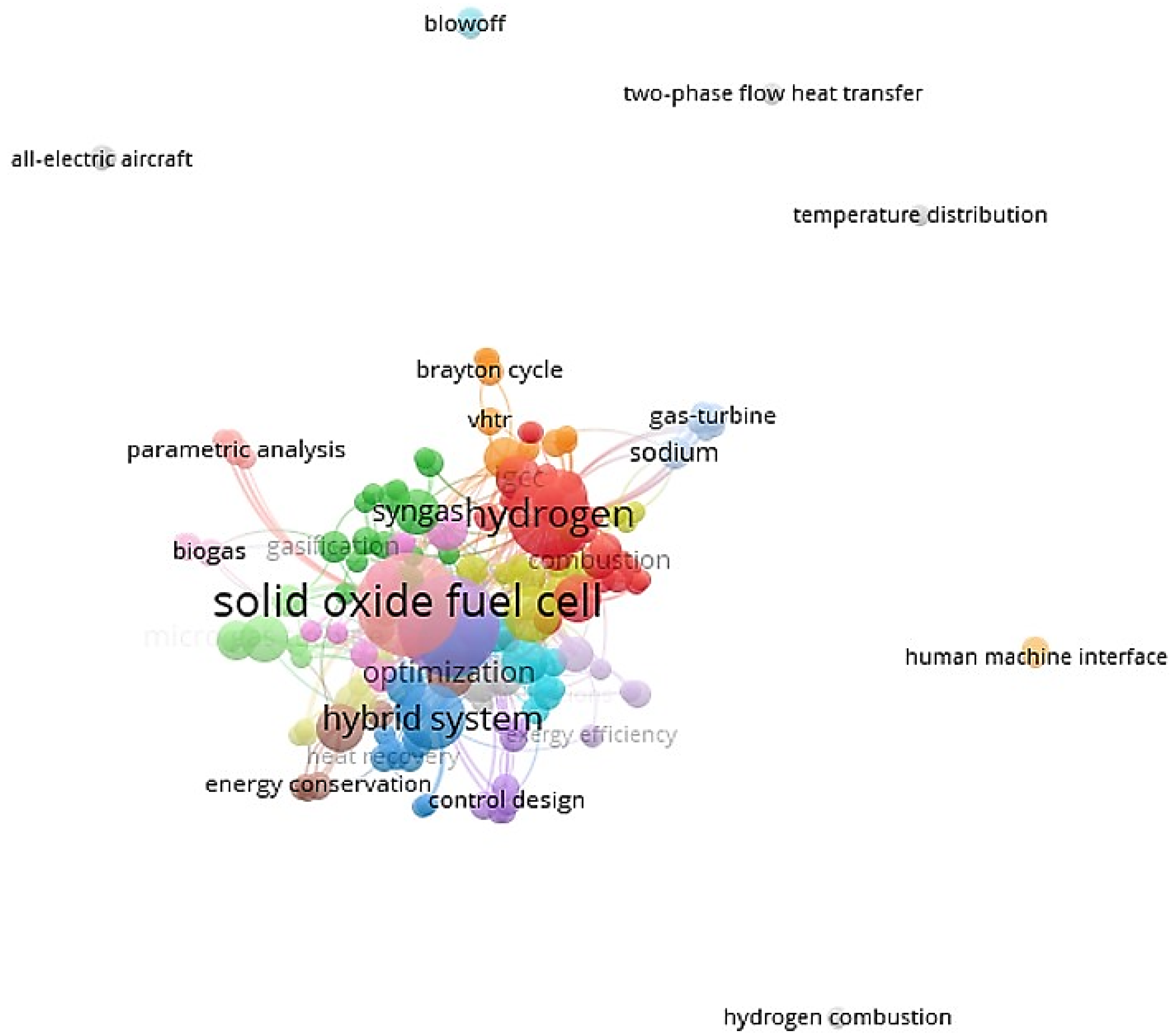
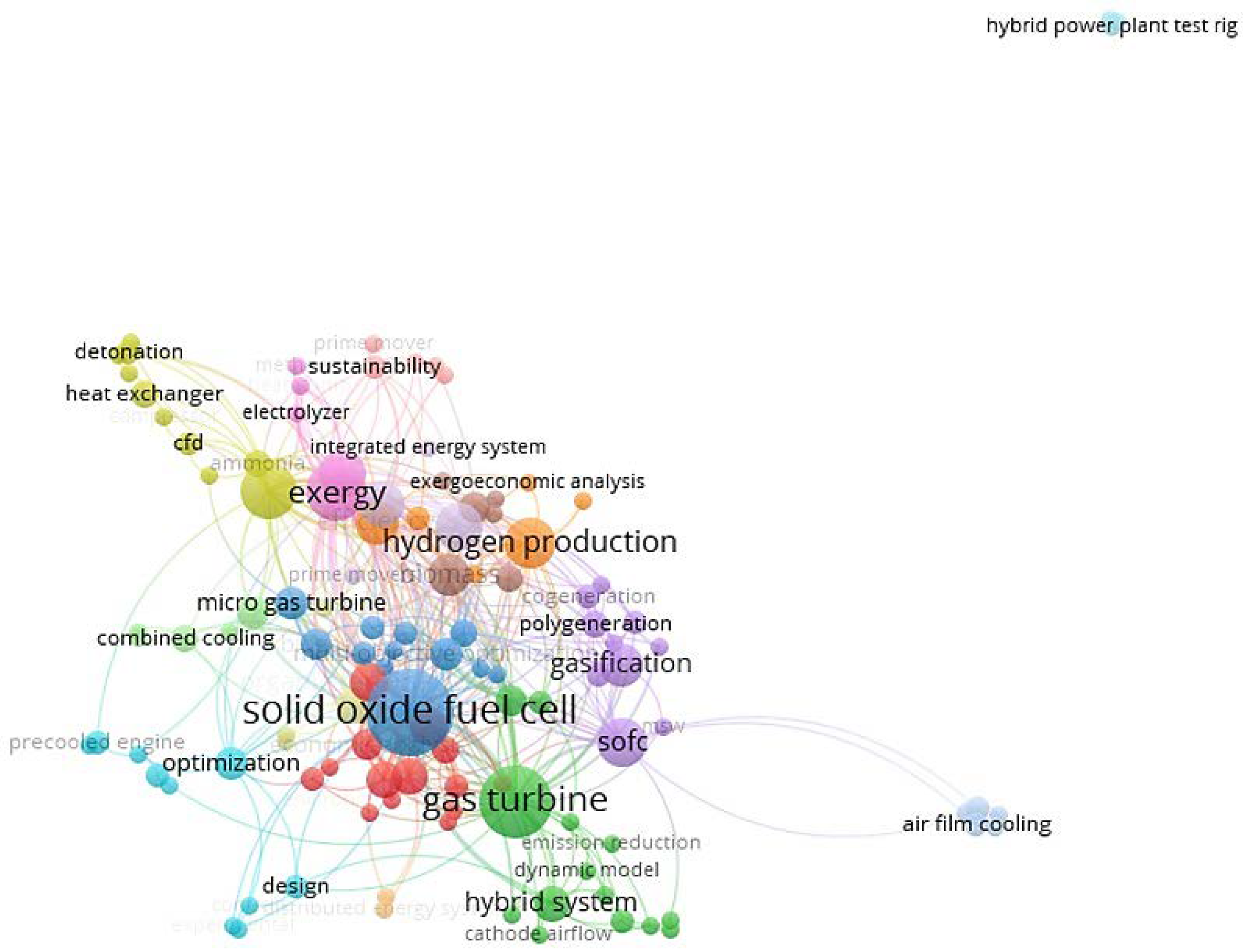
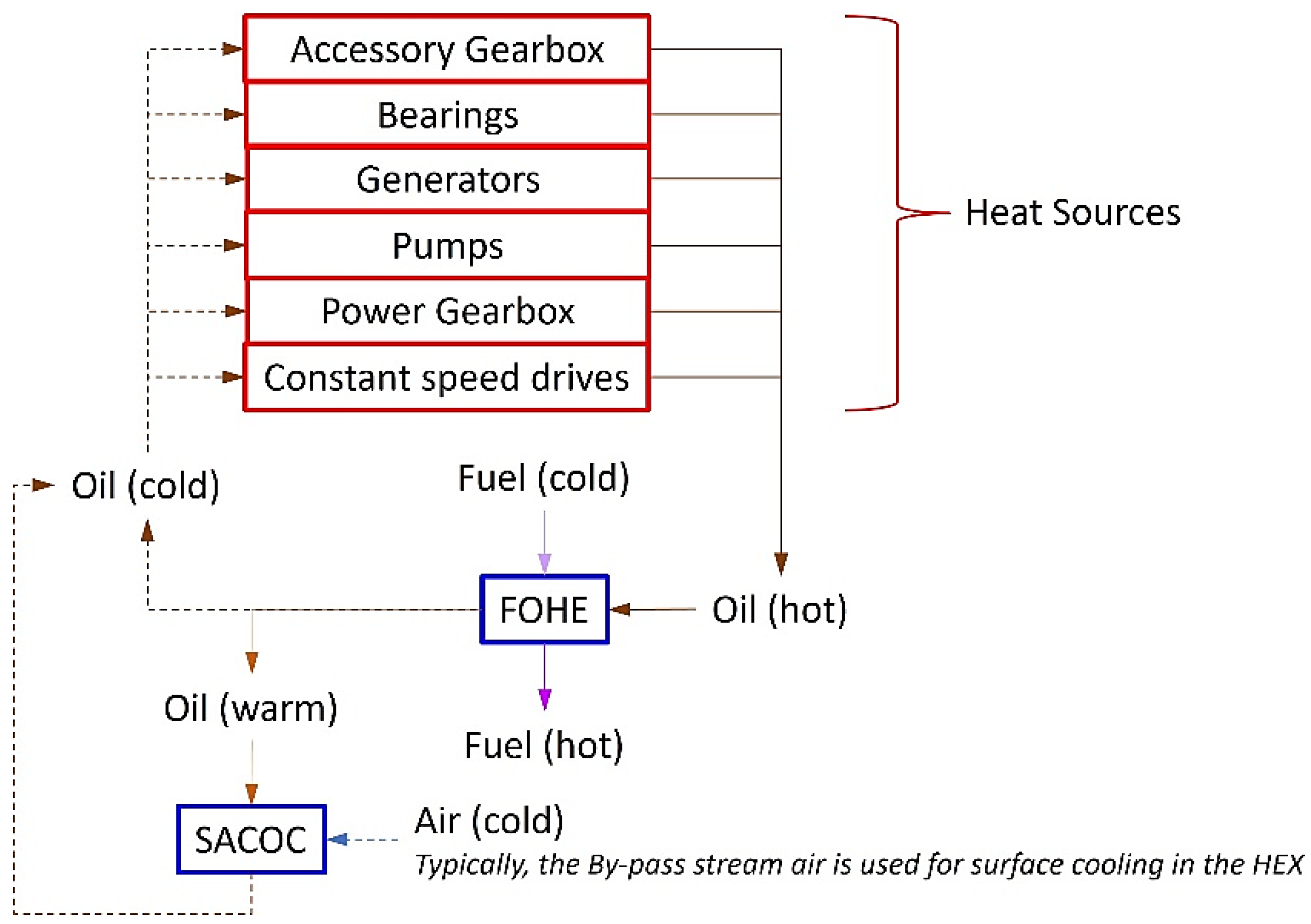


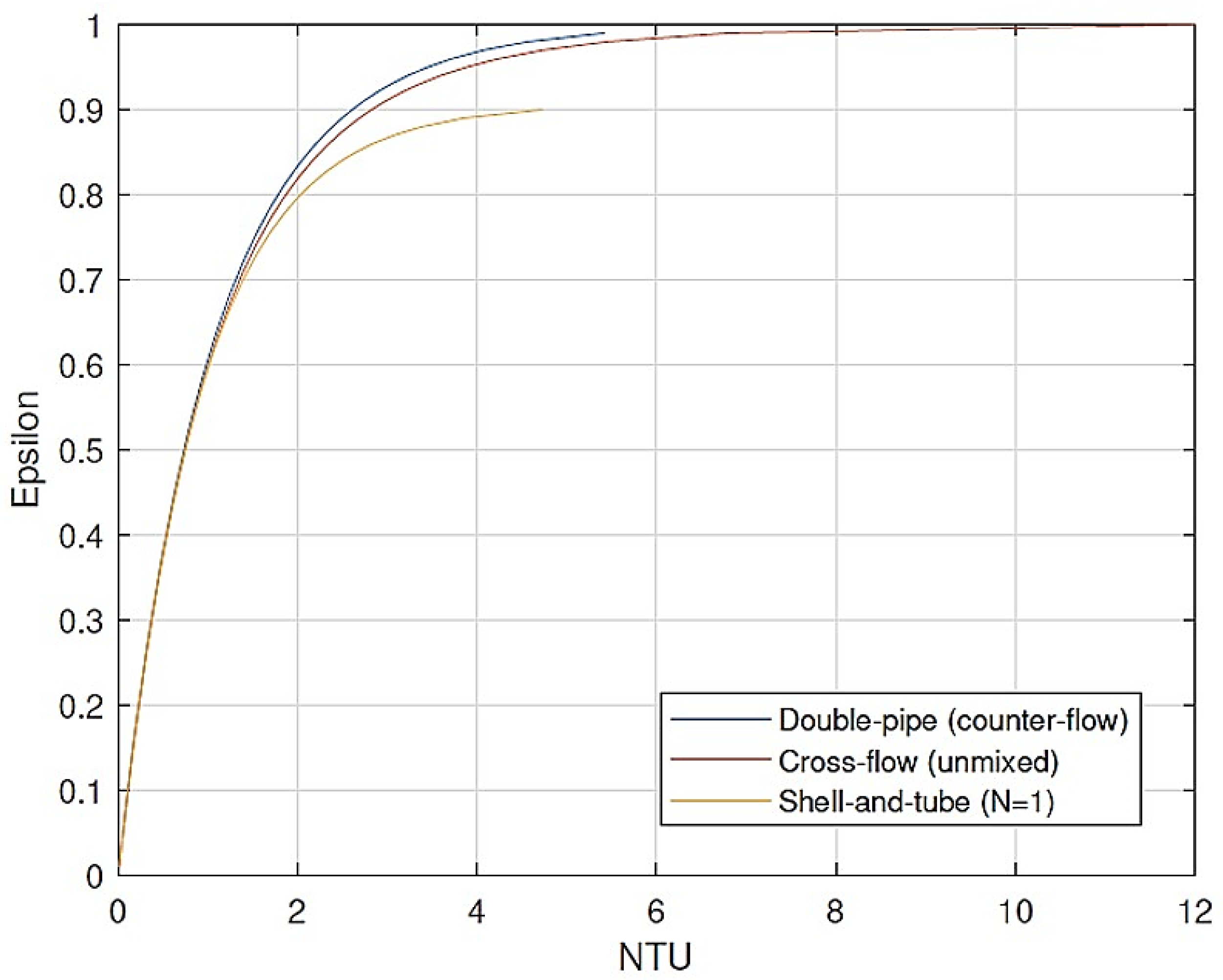
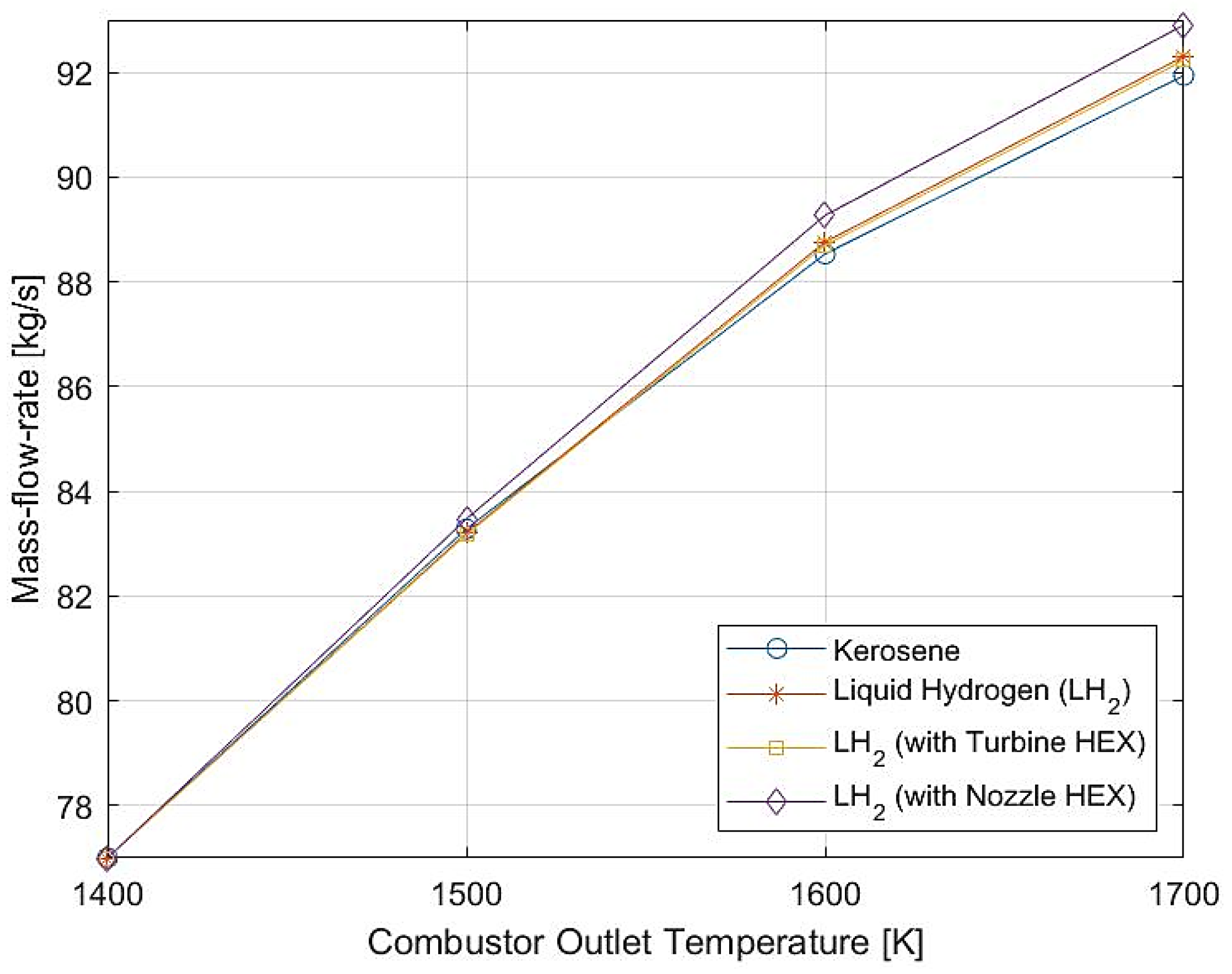


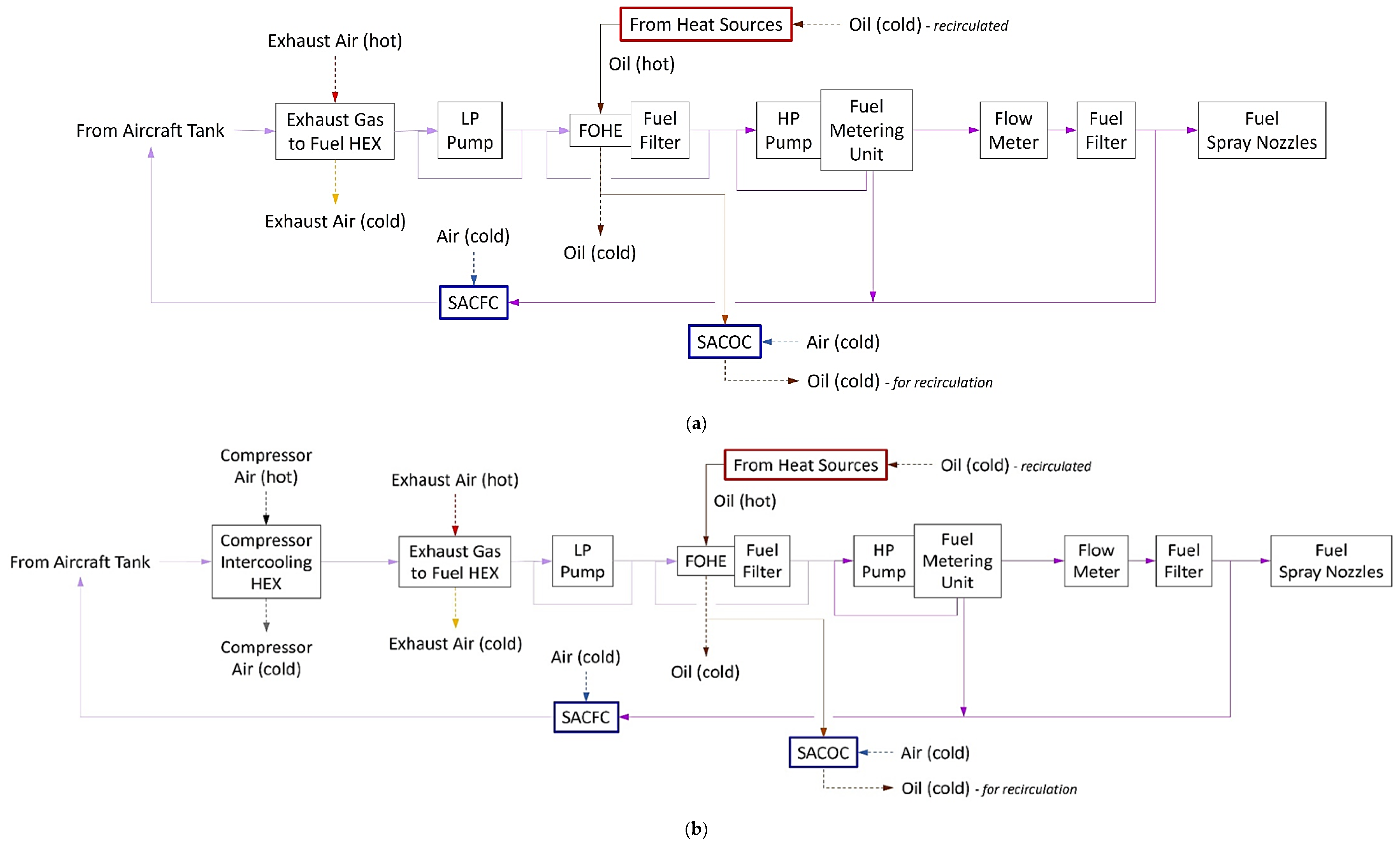

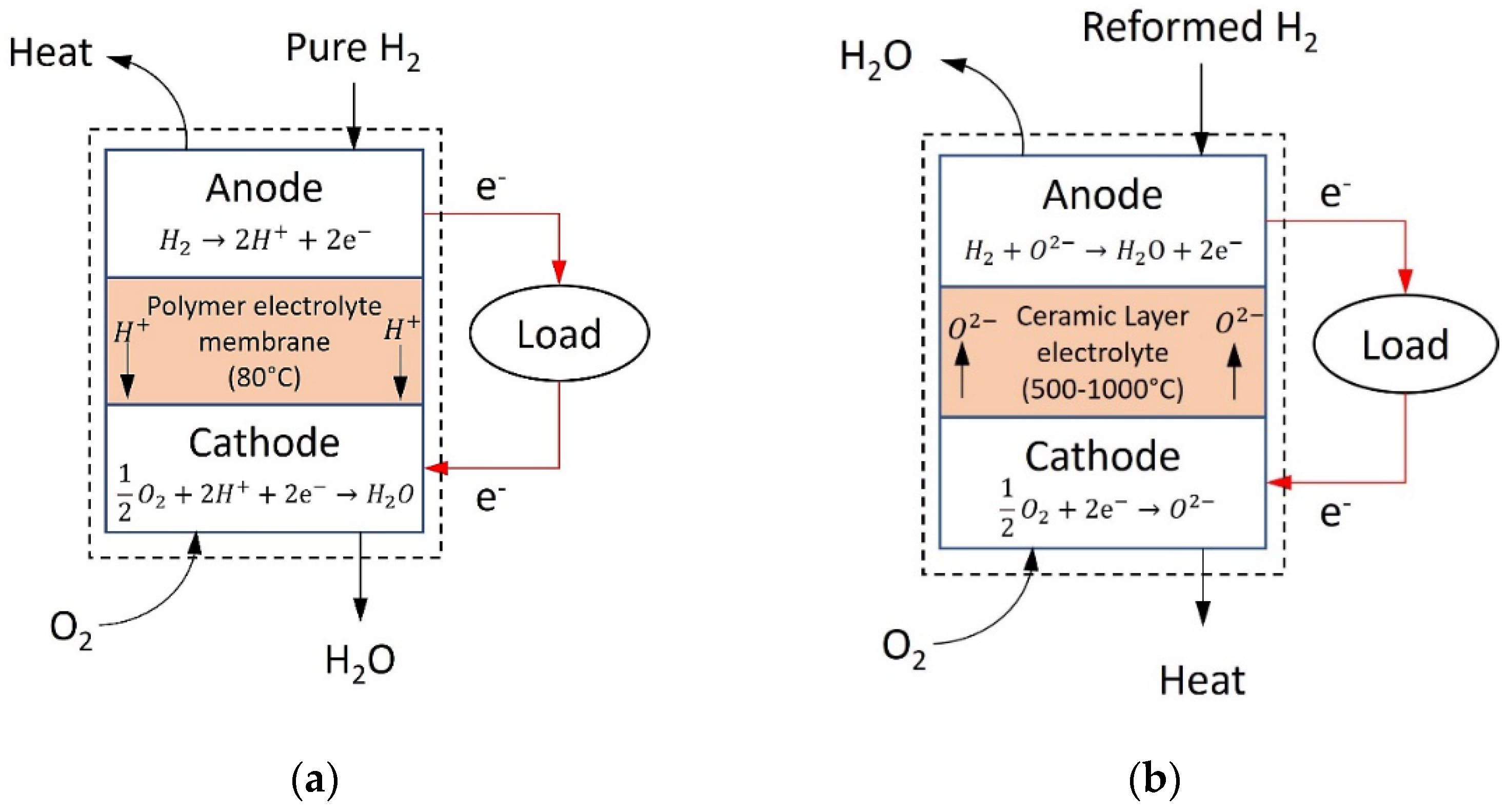
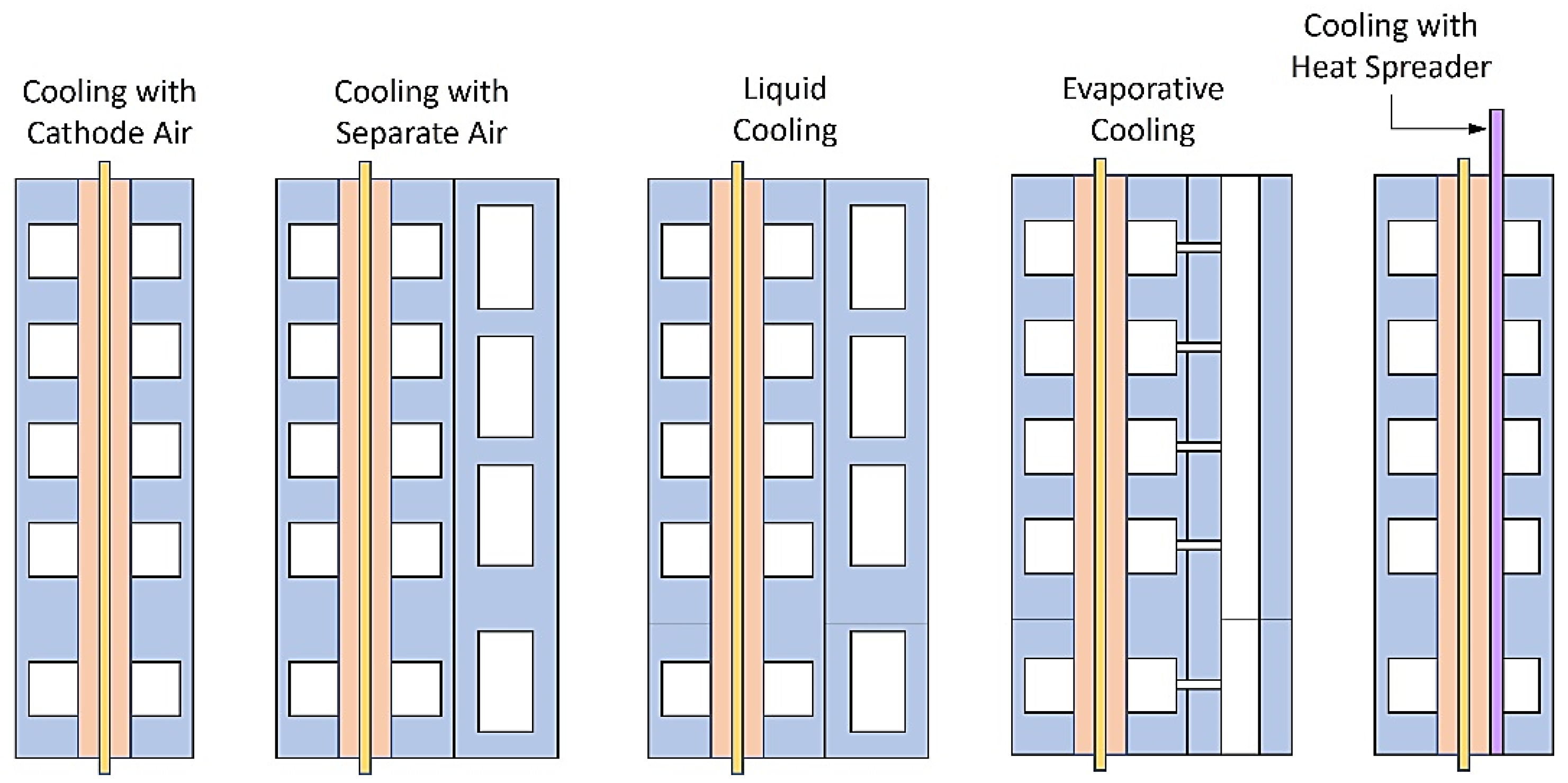


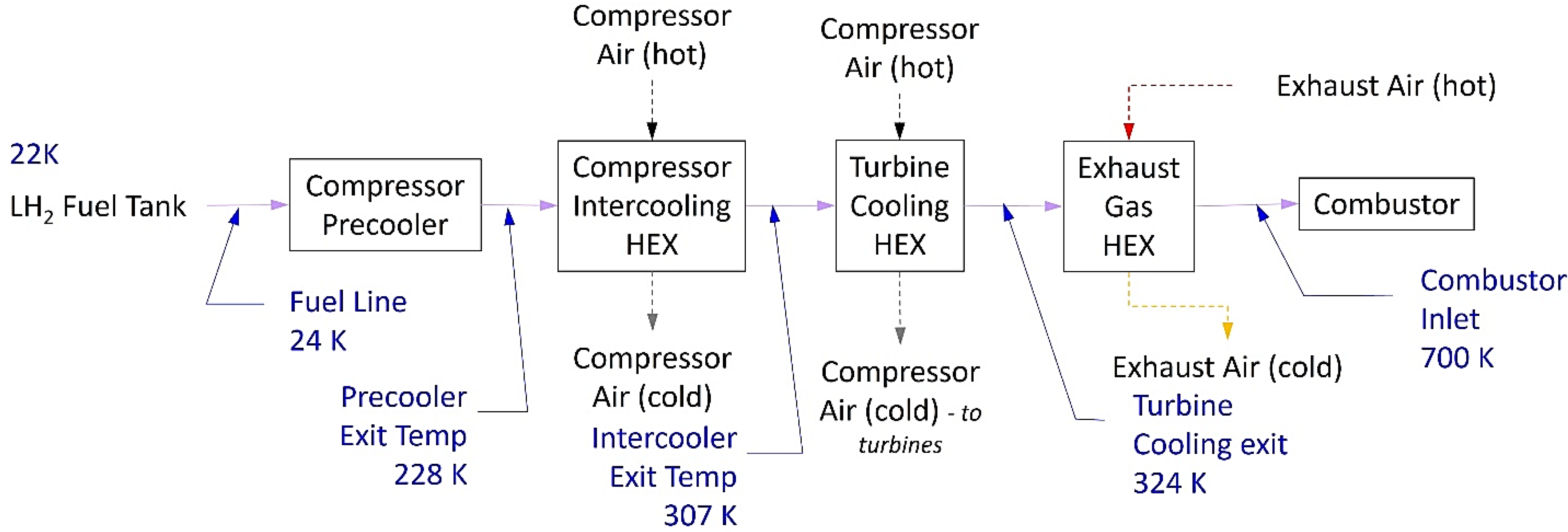
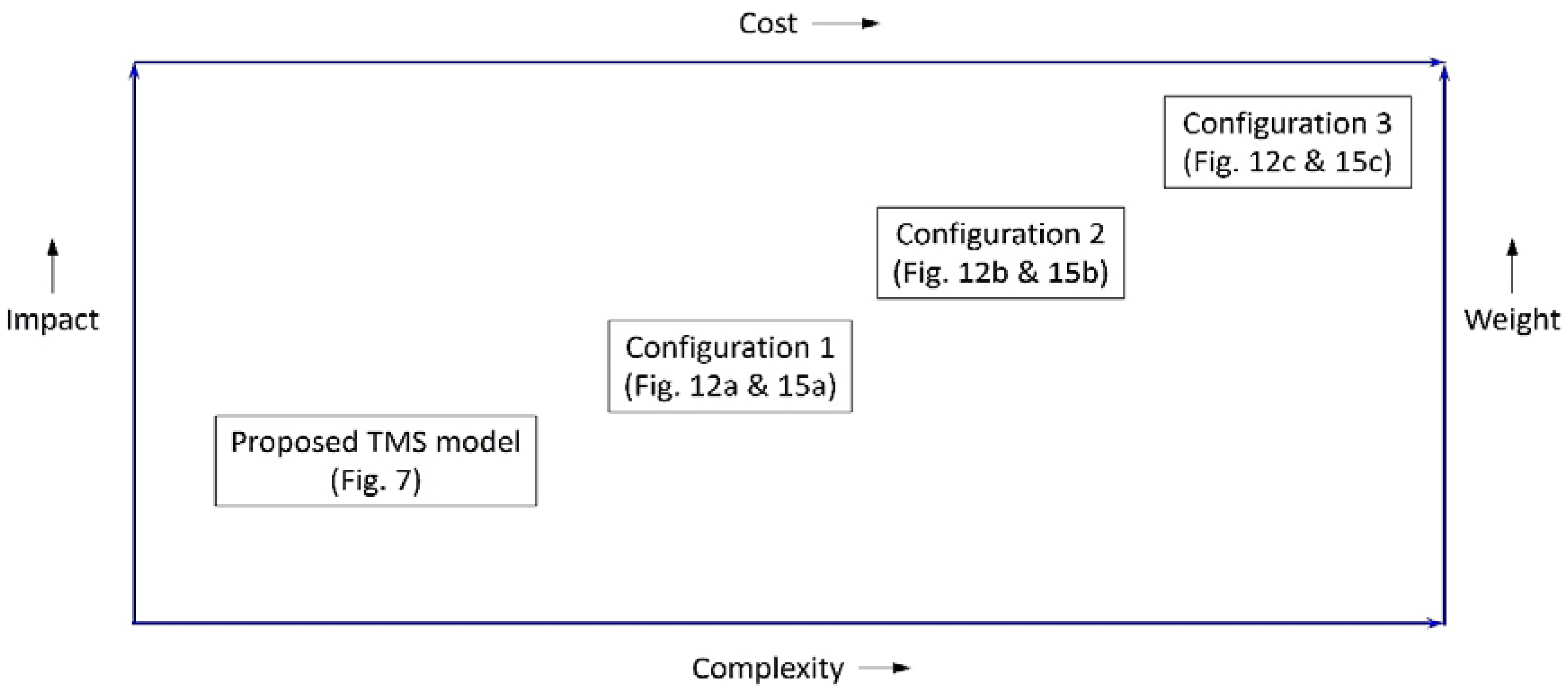
| Sl. No | Author(s) | Title | Year | Main Achievements |
|---|---|---|---|---|
| [15] | Longwell JP, Rubin ES, Rosen MA | Coal: Energy for the future | 1995 |
|
| [16] | Waitz IA, Gauba G, Tzeng YS | Combustors for micro-gas turbine engines | 1998 |
|
| [17] | Selimovic A, Palsson J | Networked solid oxide fuel cell stacks combined with a gas turbine cycle | 2002 |
|
| [18] | Winkler W, Lorenz H | The design of stationary and mobile solid oxide fuel cell—gas turbine systems | 2002 |
|
| [19] | Burer M, Tanaka K, Favrat D, Yamada K | Multi-criteria optimization of a district cogeneration plant integrating a solid oxide fuel cell—gas turbine combined cycle, heat pumps and chillers | 2003 |
|
| [20] | Spadaccini CM, Mehra A, Lee J, Zhang X, Lukachko S, et al. | High power density silicon combustion systems for micro gas turbine engines | 2003 |
|
| [21] | Chiesa P, Lozza G, Mazzocchi L | Using hydrogen as gas turbine fuel | 2005 |
|
| [22] | Ertesvag IS, Kvamsdal HM, Bolland O | Exergy analysis of a gas-turbine combined-cycle powerplant with precombustion CO2 capture | 2005 |
|
| [23] | Calise F, d’Accadia MD, Palombo A, Vanoli L | Simulation and exergy analysis of a hybrid Solid Oxide Fuel Cell (SOFC)-Gas Turbine System | 2006 |
|
| [24] | Kvamsdal HM, Jordal K, Bolland O | A quantitative comparison of gas turbine cycles with CO2 capture | 2007 |
|
| [25] | Calise F, d’Accadia MD, Vanoli L, von Spakovsky MR | Full load synthesis/design optimization of a hybrid SOFC-GT powerplant | 2007 |
|
| [26] | Mueller F, Jabbari F, Brouwer J, Roberts R, Junker T, et al. | Control design for bottoming solid oxide fuel cell gas turbine hybrid system | 2007 |
|
| [27] | Autissier N, Palazzi F, Marechal F, van Herle J, Favrat D | Thermo-economic optimization of a solid oxide fuel cell, gas turbine hybrid system | 2007 |
|
| [28] | Mueller F, Gaynor R, Auld AE, Brouwer J, Jabbari F, et al. | Synergistic integration of a gas turbine and solid oxide fuel cell for improved transient capability | 2008 |
|
| [29] | Bao C, Shi YX, Li C, Cai NS, Su QQ | Multi-level simulation platform of SOFC-GT hybrid generation system | 2010 |
|
| [30] | Tse LKC, Wilkins S, McGlashan N, Urban B, Martinez-Botas R | Solid oxide fuel cell/gas turbine tri-generation system for marine applications | 2011 |
|
| [31] | Park SK, Ahn JH, Kim TS | Performance evaluation of integrated gasification solid oxide fuel cell/gas turbine systems including carbon dioxide capture | 2011 |
|
| [32] | Zhao YR, Sadhukhan J, Lanzini A, Brandon N, Shah N | Optimal integration strategies for a syngas fuelled SOFC and gas turbine hybrid | 2011 |
|
| [33] | He F, Li Z, Liu P, Ma LW, Pistikopoulos EN | Operation window and part-load performance study of a syngas fired gas turbine | 2012 |
|
| [34] | Yan ZQ, Zhao P, Wang JF, Dai YP | Thermodynamic analysis of an SOFC-GT-ORC integrated power system with liquified natural gas as heat sink | 2013 |
|
| [35] | Barelli L, Bidini G, Ottaviano A | Part load operation of a SOFC/GT hybrid system: Dynamic analysis | 2013 |
|
| [36] | Liu MX, Shi Y, Fang F | Combined cooling, heating and power systems: A survey | 2014 |
|
| [37] | Siddiqui O, Dincer I | Analysis and performance assessment of a new solar-based multigeneration system integrated with ammonia fuel cell and solid oxide fuel cell-gas turbine combined cycle | 2017 |
|
| [38] | Hajabdollahi Z, Fu PF | Multi-objective-based configuration optimization of SOFC-GT cogeneration plant | 2017 |
|
| [39] | Azizi MA, Brouwer J | Progress in solid oxide fuel cell—gas turbine hybrid power systems: System design and analysis, transient operation, controls, and optimization | 2018 |
|
| [40] | Bao C, Wang Y, Feng DL, Jiang ZY, Zhang XX | Macroscopic modeling of solid oxide fuel cell (SOFC) and model-based control of SOFC and gas turbine hybrid system | 2018 |
|
| [41] | Abbasi M, Chahartaghi M, Hashemian SM | Energy, exergy, and economic evaluations of a CCHP system by using the internal combustion engines and gas turbine as prime movers | 2018 |
|
| [42] | Lee YD, Ahn KY, Morosuk T, Tsatsaronis G | Exergetic and exergoeconomic evaluation of an SOFC-Engine hybrid power generation system | 2018 |
|
| [43] | Behzadi, A, Habibollahzade A, Zare V, Ashjaee M | Multi-objective optimization of a hybrid biomass-based SOFC/GT/double effect absorption chiller/RO desalination system with CO2 recycle | 2019 |
|
| [44] | Osigwe, E. O., Gad-Briggs, A., Nikolaidis, T., Jafari, S., Sethi, B., & Pilidis, P. | Thermodynamic Performance and Creep Life Assessment Comparing Hydrogen- and Jet-Fueled Turbofan Aero Engine | 2021 |
|
| Timespan/Phase | Total No. of Clusters in the Timespan | Cluster No. | Keywords in the Cluster |
|---|---|---|---|
| Phase 1 (1991–2004) | 27 | 1 | Cathode gas cooling—combustion—energy conversion—fuel cells—gas turbines—molten carbonate fuel cell—nuclear power—partial load thermal efficiency—power generation—power systems simulations—pressure swing operation—renewable energy simulation—space power—steam turbines |
| 2 | Aerospace—combined cycles—combined system—hybrid system—mathematical modelling—methane—multistage oxidation—NPSS—polymer electrolyte fuel cell—reformer—solid oxide fuel cell—steam reforming reaction—system model | ||
| 3 | Helium—high temperature—high temperature reactor—HTGR—HTTR—hydrogen production—inherent safety—molten salt—performance—test-rise to power—VHTR | ||
| 4 | Catalytic combustion—combined cycle—fuel cell—gas turbine—heat exchanger—hydrogen combustion—methane oxidation—oxygen plant—powerplant—reaction mechanism—steam—turbine | ||
| 5 | Chemical equilibrium—chemical reaction—corrosion—Graz cycle—heat transfer—HRSG—mass transfer—packed bed—steam reforming—waste heat recovery | ||
| 6 | Aspen plus—cell bypass—CO2 acceptor—coal gasification—energy production—fossil fuels—fuel energy savings ratio—pollution—superheaters—waste incineration | ||
| 7 | Absorption—cogeneration—electronics cooling—production—refrigeration—temperature—trigeneration—turbines—waste heat | ||
| 8 | Energy storage - molten carbonate fuel cell—hydrogen turbine—integrated coal gasification –performance of practical cell—thermal efficiency—waste heat recovery—water gas shift reaction | ||
| 9 | Aerospace plane—cooling—data center—hydrogen—hypersonic—integrated—power | ||
| 10 | ASU—CO2—LNG—recirculated of flue gas—recirculated flue gas—zero emission | ||
| 11 | Ball bearings—bearings—ceramic bearings—rolling element bearings—self-lubricating bearings | ||
| 12 | Catalytic reaction—jet/supersonic flow interaction—scran jet engine—supersonic mixing—wedge shaped injector | ||
| 13 | Efficiency optimization—hybrid—MCFC—trigeneration—tubular SOFC | ||
| 14 | Fuel cell plant—exergy analysis—modified productive structure—thermoeconomic analysis—phosphoric acid fuel cell | ||
| 15 | Heat recovery steam generator—high pressure turbine—hydrogen fuelled combustors—intermediate high-pressure turbine—intermediate pressure turbine | ||
| 16 | Oxygen collection—reusable—separation device—space launchers—TSTO | ||
| 17 | Air cooling—design—hydrogen cooling—turbogenerator | ||
| 18 | CHP: combined heat and power same as cogeneration Cogen: short for cogeneration HRSG: heat recovery steam generator | ||
| 19 | Compact heat exchanger—hydrogen heater—spacecraft applications—turboramjet engine | ||
| 20 | Counterflow diffusion flame—turbulent combustion simulation | ||
| 21 | Diffusion hole—film cooling—hot wire anemometry—turbulent boundary layer | ||
| 22 | Cogeneration cycles—hybrid power cycles—molten carbonate fuel cell plants | ||
| 23 | CO2 capture—flue gas recycle—oxy-fuel combustion | ||
| 24 | Jet impingement—mist/steam heat transfer—turbine blade cooling | ||
| 25 | Innovative technologies—non-proliferation—plant design and construction | ||
| 26 | CGO—metal supported—solid oxide fuel cells | ||
| 27 | Coal based integrated gasification combined cycle plants |
| Keyword | Occurrences | Total Link Strength |
|---|---|---|
| Combined cycle | 6 | 20 |
| Fuel cells | 5 | 23 |
| Gas turbine | 5 | 20 |
| Solid oxide fuel cell | 5 | 20 |
| Thermal efficiency | 4 | 18 |
| Gas turbines | 4 | 9 |
| Heat transfer | 3 | 15 |
| Coal gasification | 3 | 13 |
| Cogeneration | 2 | 13 |
| Pollution | 2 | 12 |
| Steam reforming | 2 | 12 |
| Waste heat recovery | 2 | 12 |
| Hydrogen production | 2 | 11 |
| Power generation | 2 | 10 |
| ASU | 2 | 9 |
| CO2 | 2 | 9 |
| LNG | 2 | 9 |
| Zero emission | 2 | 9 |
| Cooling | 2 | 6 |
| Molten carbonate fuel cell (MCFC) | 2 | 5 |
| Hydrogen turbine | 2 | 4 |
| Solid oxide fuel cells | 2 | 4 |
| Timespan/Phase | Total No. of Clusters in the Timespan | Cluster No. | Keywords in the Cluster |
|---|---|---|---|
| Phase 2 (2005–2016) | 23 | 1 | Carbon capture—combustion—carbon capture and storage—chemical looping–CO2 capture—coal gasification—combustion—computational fluid dynamics—electricity production—fluid mechanics—fuel flexibility—gas turbines—heat transfer—hydrogen—IGCC—MCFC detailed model—micro combustor—micro combustion—modelling—numerical analysis—oxy-fuel—pinch analysis—process—simulation—reaction engineering—solar energy—thermal performance |
| 2 | AZEP—CCS—cooling—diffusion flame—fuel cells—gas turbine combustor—gasification—high pressure—hybrid power system—integration—modelling—oxy-combustion—syngas—thermal barrier coatings—thermal management—thermodynamics | ||
| 3 | Combined heat and power—dynamic model—energy saving—heat recovery—heat to power ratio—hybrid system—intermediate temperature—load following—networked—operating strategy—shutdown—solid oxide fuel cells (SOFC)—startup—system simulation | ||
| 4 | Aircraft engine—biomass gasification—efficiency—exergy—heat exchanger—heat pipe—micro CHP—performance—plate fin—recuperator—simulation—stirling engine—thermoeconomics | ||
| 5 | Bio fuels—carbon dioxide recovery—control design—gas turbine—reforming—RGA—robust control—SOFC hybrid—SOFC-GT—system design | ||
| 6 | Applications—cycle tempo—energy utilisation factor—exergy analysis—fuel cell systems—MCFC—PEMFC—SOFC—system modelling—thermodynamic analysis | ||
| 7 | Brayton cycle—energy efficiency—ethanol—heat integration, hydrogen production—LH2 cryogenic exergy—nitrogen—power park—steam reforming—VHTR | ||
| 8 | CHP—combined power plant—energy conservation—fuel cell—hydrogen energy—optimization—power plant—protection of the environment | ||
| 9 | Absorption chiller—absorption refrigeration—combined cycle—cycle analysis—distributed generation—hybrid cycle—microturbine—planar solid oxide fuel cell | ||
| 10 | Ammonia-water mixture—blower recirculation—hybrid power plant—integrated system control—modular design—parametric analysis—solid oxide fuel cell | ||
| 11 | Biomass—gas turbine combustion—hydrogen enrichment—micro gas turbine—model—NOx performance analysis | ||
| 12 | Capture—carbon—chemical—economy—gas turbine—looping—sodium | ||
| 13 | Air conditioning—cogeneration—district cooling—thermal storage—thermodynamic simulation—trigeneration | ||
| 14 | Energy—exergy efficiency—high temperature gas-cooled reactor—liquified natural gas—liquid hydrogen—organic Rankine cycle | ||
| 15 | Blowoff—flashback—hydrogen fuel switching—lean premixed—swirl number | ||
| 16 | Human machine interface—hydrogen cooling system—supervisory control and data acquisition—system reliability—Weibull distribution | ||
| 17 | Heat exchangers—hybrid systems– proton exchange membrane fuel cells—molten carbonate fuel cells– solid oxide fuel cells | ||
| 18 | Alternative energy systems—biogas—energy rationalisation—organic matter | ||
| 19 | Molten carbonate fuel cell—multi-objective optimization—optimization criteria—power generation | ||
| 20 | All-electric aircraft—electrical propulsion—superconducting motor | ||
| 21 | Hydrogen combustion | ||
| 22 | Temperature distribution | ||
| 23 | Two phase flow heat transfer |
| Keyword | Occurrences | Total Link Strength |
|---|---|---|
| Solid oxide fuel cell | 41 | 109 |
| Gas turbine | 39 | 110 |
| Hydrogen | 26 | 71 |
| SOFC | 20 | 49 |
| Hybrid system | 16 | 42 |
| Exergy | 12 | 38 |
| CO2 capture | 12 | 15 |
| Optimization | 9 | 24 |
| Heat transfer | 9 | 23 |
| Fuel cell | 9 | 22 |
| Micro gas turbine | 9 | 16 |
| Exergy analysis | 8 | 23 |
| IGCC | 8 | 19 |
| Syngas | 8 | 18 |
| Cogeneration | 7 | 24 |
| MCFC | 7 | 23 |
| Combined cycle | 7 | 18 |
| Hydrogen production | 7 | 14 |
| Combined heat and power | 6 | 16 |
| Natural gas | 6 | 12 |
| Molten carbonate fuel cell | 6 | 11 |
| Gas turbine combustion | 6 | 5 |
| Efficiency | 5 | 23 |
| Energy | 5 | 19 |
| Absorption chiller | 5 | 13 |
| Heat exchanger | 5 | 12 |
| Combustion | 5 | 11 |
| Solid oxide fuel cells | 5 | 11 |
| Timespan/Phase | Total No. of Clusters in the Timespan | Cluster No. | Keywords in the Cluster |
|---|---|---|---|
| Phase 3 (2017–2021) | 16 | 1 | Absorption refrigeration—biomass gasification—CCHP—combined cooling and power—combined cycle—economic analysis—environmental analysis—exergy analysis—heat recovery steam generator—MCFC—organic Rankine cycle—molten carbonate fuel cell–parabolic trough solar collector—stirling engine |
| 2 | Absorption chiller—cathode airflow—desalination—dynamic model—emission reduction—fuel cell—fuel utilisation—gas turbine—hybrid system—organic Rankine cycle (ORC)—SOFC/GT—solid oxide fuel cell (SOFC)—thermal management—thermoeconomic analysis | ||
| 3 | 4e analysis—biogas—carbon capture—exergoeconomic—exergy destruction—exergy efficiency—LNG—micro gas turbine—multi-effect desalination—multi-objective optimization—poly-generation—solid oxide fuel cell | ||
| 4 | Ammonia—CFD—compressor—deflagration—detonation—gas turbine combustion—heat exchanger—heat transfer—hydrogen—pulse detonation engine | ||
| 5 | Cogeneration—district heating and cooling—gasification—modelling—MSW—municipal solid waste—polygeneration—simulation—SOFC—trigeneration | ||
| 6 | Configuration design—controls—design—experimental—hydrogen fuel—hypersonic—numerical simulation—optimization—precooled engine—turbines | ||
| 7 | CO2 capture—efficiency—exergoeconomic analysis—hydrogen production—power generation—thermal efficiency | ||
| 8 | Biomass—LNG regasification—multi-generation—thermodynamic cycle—transcritical CO2 cycle—waste heat recovery | ||
| 9 | Electrolyzer—energy—exergy—heat pump—methane | ||
| 10 | Fuel cell gas turbine hybrid—multigeneration system—prime mover—sustainability—thermal energy storage | ||
| 11 | Combined cooling—feedback correction—rolling optimization—steam ejector—thermodynamic analysis | ||
| 12 | Air film cooling—blade cooled GT—hybrid cycle—hybrid efficiency—SOFC—ICGT | ||
| 13 | Fuel cell—jet engine—solar—thermodynamics | ||
| 14 | Integrated energy system—multigeneration—prime movers—solar energy | ||
| 15 | Hybrid power plant test rig—MGT—SOFC emulator | ||
| 16 | Distributed energy system—energy storage |
| Keyword | Occurrences | Total Link Strength |
|---|---|---|
| Solid oxide fuel cell | 40 | 94 |
| Gas turbine | 28 | 68 |
| Exergy | 19 | 73 |
| Hydrogen | 17 | 41 |
| Hydrogen production | 14 | 31 |
| SOFC | 13 | 26 |
| Energy | 12 | 48 |
| Multigeneration | 12 | 40 |
| Solar energy | 11 | 35 |
| Efficiency | 10 | 45 |
| Gasification | 10 | 21 |
| Biomass | 9 | 32 |
| Organic Rankine cycle | 8 | 29 |
| Biomass gasification | 8 | 26 |
| Exergy analysis | 7 | 22 |
| Hybrid system | 7 | 19 |
| Molten carbonate fuel cell | 7 | 17 |
| Fuel cell | 7 | 15 |
| Thermodynamic analysis | 6 | 20 |
| Multi-objective optimization | 6 | 14 |
| Optimization | 6 | 14 |
| Micro gas turbine | 6 | 13 |
| Economic analysis | 5 | 20 |
| Absorption chiller | 5 | 14 |
| Waste heat recovery | 5 | 9 |
| Biogas | 5 | 6 |
| Ammonia | 4 | 17 |
| LNG | 4 | 13 |
| Multi-generation | 4 | 11 |
| CCHP | 4 | 10 |
| Polygeneration | 4 | 10 |
| Combined cooling | 4 | 9 |
| Heat exchanger | 4 | 3 |
| Summary of Components | ||
|---|---|---|
| Tanks | Benefits | Challenges |
| Fuel Drain Tank |
|
|
| Spill-back to Aircraft Tank |
|
|
| Heat Exchangers | Benefits | Challenges |
| Exhaust Gas HEX |
|
|
| Compressor Intercooling HEX |
|
|
| Turbine Cooling Air HEX |
|
|
| Pumps or Mechanical Compressors | Benefits | Challenges |
| Reciprocating Pumps |
|
|
| Diaphragm Pumps |
|
|
| Linear Compressors or Pumps |
|
|
| Centrifugal Pumps |
|
|
| Cryogenic Pumps |
|
|
Publisher’s Note: MDPI stays neutral with regard to jurisdictional claims in published maps and institutional affiliations. |
© 2022 by the authors. Licensee MDPI, Basel, Switzerland. This article is an open access article distributed under the terms and conditions of the Creative Commons Attribution (CC BY) license (https://creativecommons.org/licenses/by/4.0/).
Share and Cite
Srinath, A.N.; Pena López, Á.; Miran Fashandi, S.A.; Lechat, S.; di Legge, G.; Nabavi, S.A.; Nikolaidis, T.; Jafari, S. Thermal Management System Architecture for Hydrogen-Powered Propulsion Technologies: Practices, Thematic Clusters, System Architectures, Future Challenges, and Opportunities. Energies 2022, 15, 304. https://doi.org/10.3390/en15010304
Srinath AN, Pena López Á, Miran Fashandi SA, Lechat S, di Legge G, Nabavi SA, Nikolaidis T, Jafari S. Thermal Management System Architecture for Hydrogen-Powered Propulsion Technologies: Practices, Thematic Clusters, System Architectures, Future Challenges, and Opportunities. Energies. 2022; 15(1):304. https://doi.org/10.3390/en15010304
Chicago/Turabian StyleSrinath, Akshay Nag, Álvaro Pena López, Seyed Alireza Miran Fashandi, Sylvain Lechat, Giampiero di Legge, Seyed Ali Nabavi, Theoklis Nikolaidis, and Soheil Jafari. 2022. "Thermal Management System Architecture for Hydrogen-Powered Propulsion Technologies: Practices, Thematic Clusters, System Architectures, Future Challenges, and Opportunities" Energies 15, no. 1: 304. https://doi.org/10.3390/en15010304
APA StyleSrinath, A. N., Pena López, Á., Miran Fashandi, S. A., Lechat, S., di Legge, G., Nabavi, S. A., Nikolaidis, T., & Jafari, S. (2022). Thermal Management System Architecture for Hydrogen-Powered Propulsion Technologies: Practices, Thematic Clusters, System Architectures, Future Challenges, and Opportunities. Energies, 15(1), 304. https://doi.org/10.3390/en15010304









